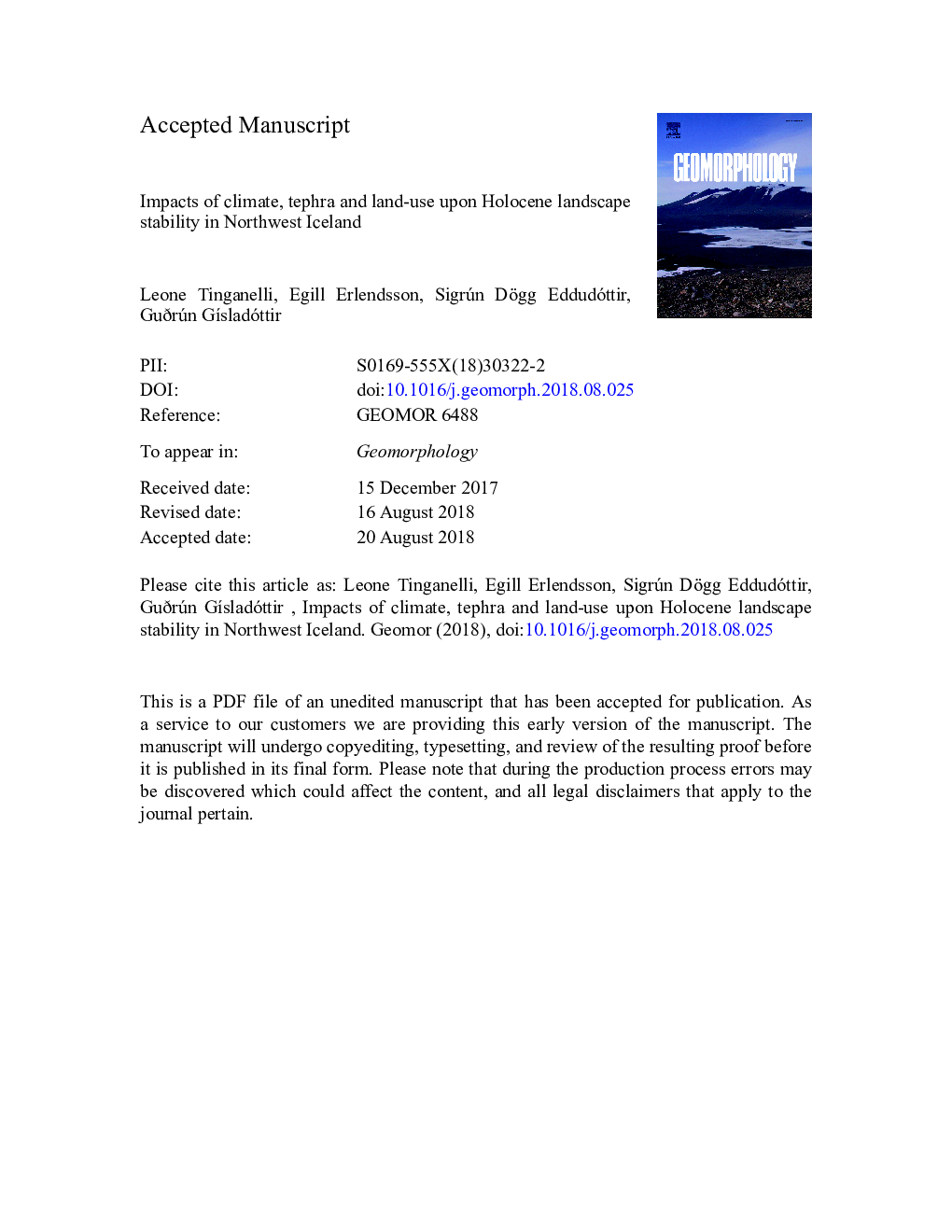| Article ID | Journal | Published Year | Pages | File Type |
|---|---|---|---|---|
| 8966165 | Geomorphology | 2018 | 52 Pages |
Abstract
Climate, land use and tephra deposition are the primary drivers of environmental change in Iceland. Understanding the roles of these factors in the formation of the current Icelandic landscape requires an examination of environmental change over wide temporal and spatial scales. Using sediments from two lakes, each spanning the last 10,300â¯years, this study presents evidence of the effects of climate, volcanism and human settlement on the environment in the highland margin and in lowland areas in Northwest Iceland during the Holocene. The results show that sedimentary processes in the lakes have been primarily driven by the different geographical settings in lowland and highland areas. The impacts of Holocene climate change on the environment were identified in both lake records by distinct variations in both physical and chemical proxies. The lacustrine sedimentary records from Hafratjörn and Barðalækjartjörn highlight the important relationship between vegetation cover and landscape resilience to two of the most voluminous tephra deposits of the Holocene: Hekla 4 and Hekla 3. The detrimental human impact on landscape stability is marked in the lake records by an increase in minerogenic material and by elevated C/N ratios in the sediment.
Keywords
Related Topics
Physical Sciences and Engineering
Earth and Planetary Sciences
Earth-Surface Processes
Authors
Leone Tinganelli, Egill Erlendsson, Sigrún Dögg Eddudóttir, Guðrún GÃsladóttir,
